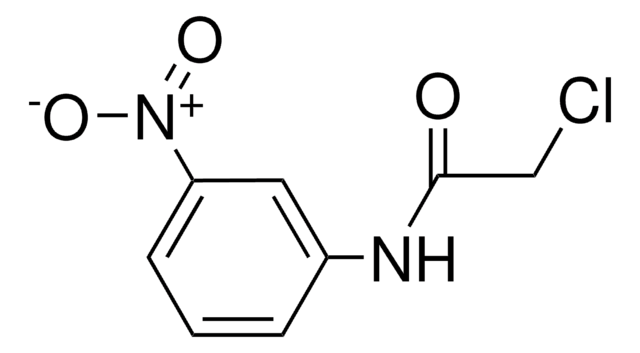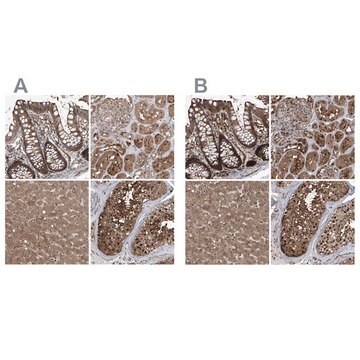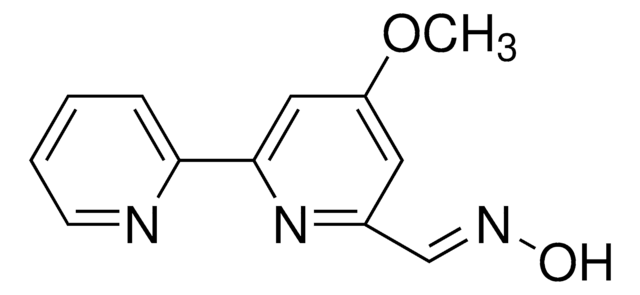SML1525
(-)-JQ1
≥95% (HPLC)
Sinonimo/i:
(R)-(-)-tert-Butyl 2-(4-(4-chlorophenyl)-2,3,9-trimethyl-6H-thieno[3,2-f][1,2,4]triazolo[4,3-a][1,4]diazepin-6-yl)acetate, 6H-Thieno[3,2-f][1,2,4]triazolo[4,3-a][1,4]diazepine-6-acetic acid, 4-(4-chlorophenyl)-2,3,9-trimethyl-, 1,1-dimethylethyl ester, (6R)-
About This Item
Prodotti consigliati
Livello qualitativo
Saggio
≥95% (HPLC)
Forma fisica
powder
Colore
white to beige
Solubilità
DMSO: 20 mg/mL, clear
Temperatura di conservazione
2-8°C
Stringa SMILE
O=C(OC(C)(C)C)C[C@@H]1C2=NN=C(C)N2C(SC(C)=C3C)=C3C(C4=CC=C(Cl)C=C4)=N1
InChI
1S/C23H25ClN4O2S/c1-12-13(2)31-22-19(12)20(15-7-9-16(24)10-8-15)25-17(11-18(29)30-23(4,5)6)21-27-26-14(3)28(21)22/h7-10,17H,11H2,1-6H3/t17-/m1/s1
DNVXATUJJDPFDM-QGZVFWFLSA-N
Descrizione generale
Azioni biochim/fisiol
For characterization details of the active probe, (+)-JQ1, please visit the JQ1 probe summary on the Structural Genomics Consortium (SGC) website.
(+)-JQ1, the active enantiomer, is available from Sigma. To learn more about and purchase (+)-JQ1, click here.
To learn about other SGC chemical probes for epigenetic targets, visit sigma.com/sgc
Caratteristiche e vantaggi
Codice della classe di stoccaggio
11 - Combustible Solids
Classe di pericolosità dell'acqua (WGK)
WGK 3
Punto d’infiammabilità (°F)
Not applicable
Punto d’infiammabilità (°C)
Not applicable
Certificati d'analisi (COA)
Cerca il Certificati d'analisi (COA) digitando il numero di lotto/batch corrispondente. I numeri di lotto o di batch sono stampati sull'etichetta dei prodotti dopo la parola ‘Lotto’ o ‘Batch’.
Possiedi già questo prodotto?
I documenti relativi ai prodotti acquistati recentemente sono disponibili nell’Archivio dei documenti.
Il team dei nostri ricercatori vanta grande esperienza in tutte le aree della ricerca quali Life Science, scienza dei materiali, sintesi chimica, cromatografia, discipline analitiche, ecc..
Contatta l'Assistenza Tecnica.








